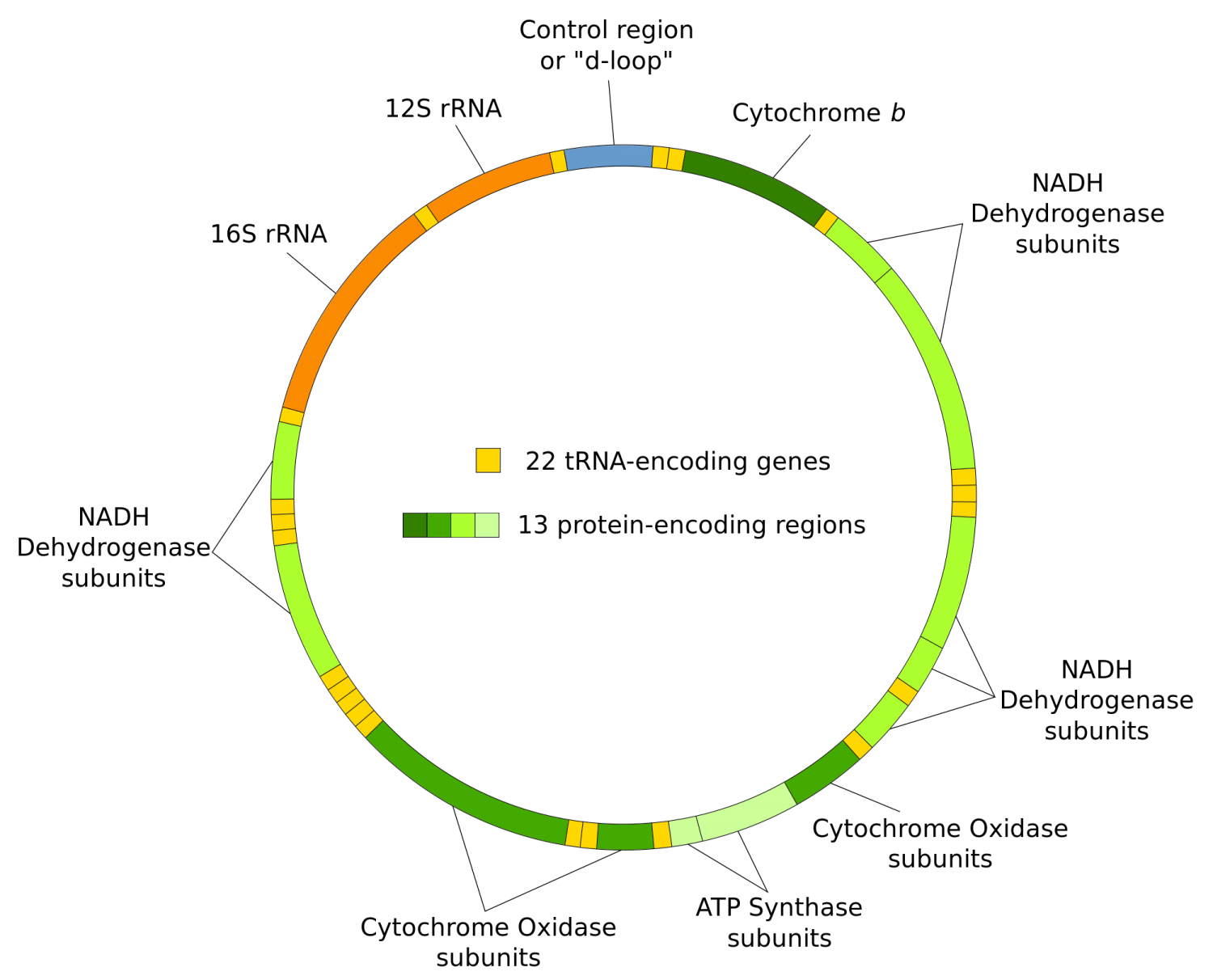

Mitochondrial DNA. Source: en.wikipedia.org
Scientists at the UCLA Jonsson Comprehensive Cancer Center have developed a simple, high-throughput method to transfer isolated mitochondria and associated mitochondrial DNA to mammalian cells. This approach allows researchers to tailor an important genetic component of cells to study and potentially treat debilitating diseases such as cancer, diabetes and metabolic disorders.
A study, published today in the journal Cell reports, describes how the new UCLA-developed device, called MitoPunch, transfers mitochondria to 100,000 or more recipient cells simultaneously, a significant improvement over existing mitochondrial transfer technologies. The device is part of UCLA scientists’ ongoing effort to understand mutations in mitochondrial DNA by developing controlled, manipulative approaches that improve human cell function or better model human mitochondrial disease.
“The ability to generate cells with the desired mitochondrial DNA sequences is powerful to study how genomes in the mitochondria and nucleus interact to regulate cellular functions, which could be crucial for understanding and potentially treating disease in patients,” said Alexander Sercel, a PhD student at the David Geffen School of Medicine at UCLA and co-lead author of the study.
Mitochondria, often known as a cell’s ‘power source’, are inherited from a person’s mother. They rely on the integrity of the mitochondrial DNA to perform their essential functions. Inherited or acquired mutations of mitochondrial DNA can significantly reduce energy production and lead to debilitating disease.
Technologies for manipulating mitochondrial DNA are lagging behind advances in manipulating DNA in the nucleus of a cell and may help scientists develop disease models and regenerative therapies for conditions caused by these mutations. However, current approaches are limited and complex and, for the most part, can only deliver mitochondria with the desired mitochondrial DNA sequences in a limited number and variety of cells.
The MitoPunch device is easy to operate and enables consistent mitochondrial transfers from a wide variety of mitochondria isolated from different donor cell types to a wide variety of recipient cell types, even for non-human species, including cells isolated from mice.
“What sets MitoPunch apart from other technologies is its ability to develop non-immortal, non-malignant cells, such as human skin cells, to generate unique combinations of mitochondrial DNA nuclear genome,” said co-first author Alexander Patananan, a postdoctoral fellow. UCLA. scholar, who now works at Amgen. “These advancements enabled us to study the impact of specific mitochondrial DNA sequences on cellular functions by also reprogramming these cells into induced pluripotent stem cells that were then differentiated into functioning fat, cartilage and bone cells.”
MitoPunch was created in the laboratories of Dr. Michael Teitell, director of the Jonsson Cancer Center and professor of pathology and laboratory medicine, Pei-Yu (Eric) Chiou, professor of mechanical and aerospace engineering at UCLA Henry Samueli School of Engineering and Applied Science and Ting-Hsiang Wu, from ImmunityBio, Inc., Culver City, CA.
MitoPunch builds on previous technology and a device called a photothermal nanosheet that the team developed in 2016. membrane covered with cells. The researchers propose that this applied pressure gradient creates the ability to pierce cell membranes in discrete locations, allowing the mitochondria to enter recipient cells directly, followed by cell membrane repair.
“When we first created the photothermal nanosheet, we knew we should have a higher throughput, easier to use system that is more accessible for other labs to assemble and operate,” said Teitell, who also heads is in the Department of Pediatrics and Developmental Pathology and a member of the UCLA Broad Stem Cell Research Center. “This new device is highly efficient and allows researchers to study the mitochondrial genome in a simple way – by switching it from one cell to another – that can be used to discover the basic biology that supports a wide variety of cell functions. and that one day could., offer hope for the treatment of mitochondrial DNA diseases. ”
Perform cellular surgery with a laser-guided nanosheet
Alexander N. Patananan et al, Pressure-controlled mitochondrial transfer pipeline generates mammalian cells of desirable genetic combinations and fates, Cell reports (2020). DOI: 10.1016 / j.celrep.2020.108562
Provided by University of California, Los Angeles
Quote: Scientists develop high-throughput mitochondria transfer device (2020, December 29) Retrieved December 29, 2020 from https://phys.org/news/2020-12-scientists-high-throughput-mitochondria-device.html
This document is protected by copyright. Other than fair treatment for the purposes of private study or research, no part may be reproduced without written permission. The content is provided for informational purposes only.